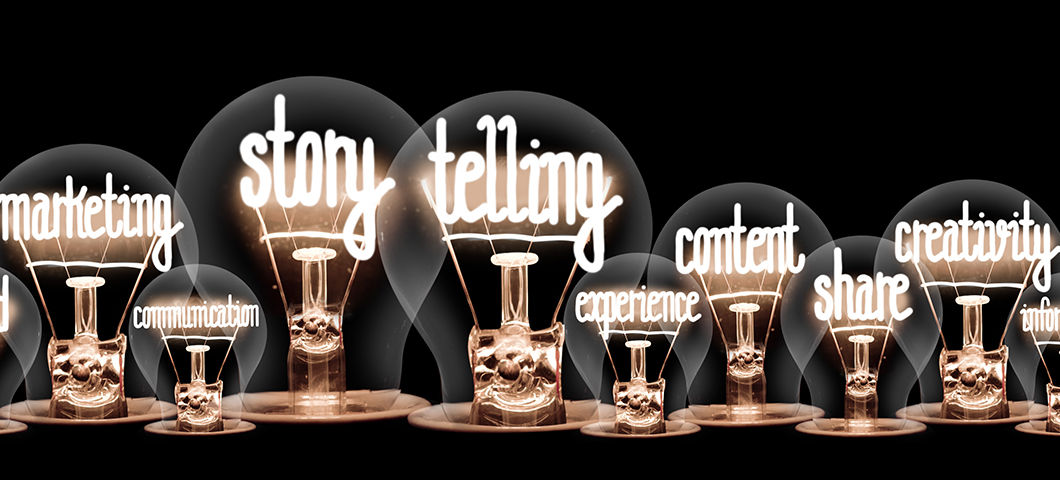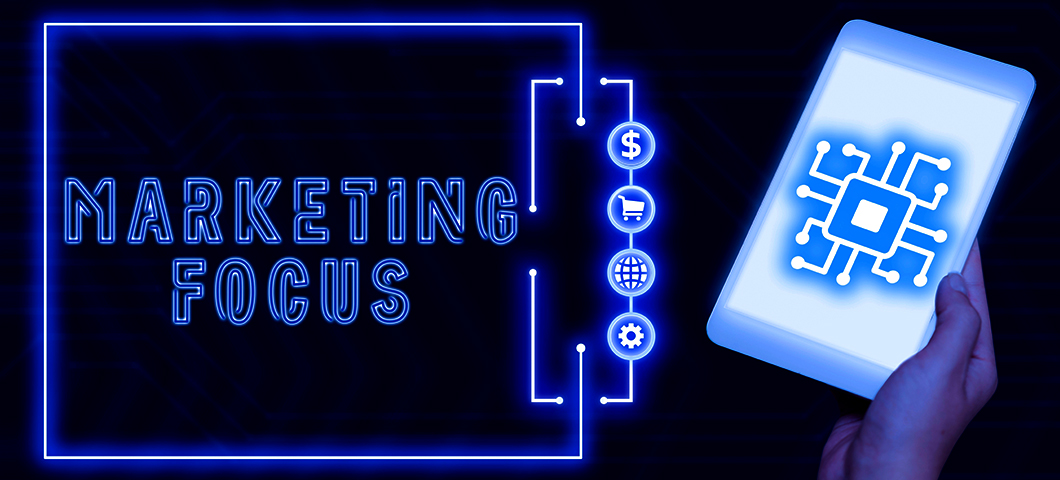
Content Marketing Fundamentals: Building a Strategy That Drives Both Traffic and Conversions
Introduction: Beyond Basic Content Creation
In today’s digital landscape, content marketing has evolved from a supplementary tactic to a fundamental business strategy. Yet many organizations continue to create content without a clear framework for driving meaningful business results. The data tells a compelling story: while 91% of B2B marketers use content marketing, only 30% rate their efforts as highly effective at driving bottom-line outcomes.
For Chief Marketing Officers navigating this complex terrain, the challenge extends beyond simply producing more content. The true opportunity lies in developing a sophisticated content marketing strategy that seamlessly connects with target audiences across multiple touchpoints while strategically guiding them through a conversion-focused journey.

At evok, we understand that effective content marketing requires both art and science—blending creative storytelling with data-driven insights to create content that not only attracts and engages but also converts. Our team has helped organizations across diverse industries transform their content approach from disconnected tactics to cohesive strategies that drive measurable business impact.
This comprehensive guide explores the fundamental elements of a conversion-focused content marketing strategy. From audience research and content mapping to distribution and optimization, we’ll provide actionable insights to help your organization develop content that consistently delivers both traffic and conversions.
Understanding Your Audience: The Foundation of Effective Content

Creating content without a deep understanding of your audience is like navigating without a map—you might occasionally reach your destination, but the journey will be inefficient and unpredictable. Sophisticated audience research provides the foundation for content that resonates and converts.
Developing Comprehensive Audience Personas
Effective content marketing begins with developing detailed audience personas that go beyond basic demographics to capture the nuances of your target audience’s needs, challenges, and decision-making processes.
Beyond Basic Demographics
While demographic information provides a starting point, truly effective personas incorporate multiple dimensions:
- Psychographic attributes (values, attitudes, interests, lifestyle)
- Professional roles and responsibilities
- Career aspirations and challenges
- Information consumption preferences
- Decision-making processes and influences
- Industry-specific pain points and opportunities
- Technology adoption patterns and preferences
Research Methodologies for Deeper Insights
Developing comprehensive personas requires multiple research approaches:
- Qualitative interviews with current customers and prospects
- Sales team insights from direct customer interactions
- Customer support analysis revealing common challenges
- Social listening to capture unfiltered audience conversations
- Survey data identifying preference patterns and priorities
- Website and content analytics revealing behavioral patterns
- Competitor analysis identifying underserved audience segments
Persona Evolution Through the Customer Journey
Sophisticated personas recognize that audience needs evolve throughout their journey:
- Awareness stage: Information-seeking behaviors and initial pain points
- Consideration stage: Evaluation criteria and comparison factors
- Decision stage: Validation requirements and risk mitigation concerns
- Post-purchase stage: Implementation challenges and success metrics
Mapping Content to the Buyer’s Journey
Once you’ve established comprehensive audience personas, the next step is mapping content types and topics to specific stages of the buyer’s journey. This strategic approach ensures you’re delivering the right content at the right time to move prospects toward conversion.
Awareness Stage Content
At this early stage, prospects are identifying challenges or opportunities. Effective content focuses on education rather than promotion:
- Thought leadership articles identifying emerging trends
- Research reports quantifying industry challenges
- Educational blog posts highlighting problem recognition
- Diagnostic tools for self-assessment
- Industry primers establishing foundational knowledge
- Social media content raising awareness of key issues
Consideration Stage Content
As prospects evaluate different approaches to addressing their needs, content should provide deeper insights and solution-oriented information:
- Solution comparison guides exploring different approaches
- Case studies demonstrating successful implementations
- Explainer videos detailing methodologies
- Expert webinars addressing specific challenges
- In-depth white papers examining solution categories
- Practical worksheets for solution evaluation
Decision Stage Content
When prospects are making final selections, content should provide validation and reduce perceived risk:
- Product or service comparisons with specific differentiators
- Technical specifications and implementation guides
- Customer testimonials addressing specific concerns
- ROI calculators and value assessments
- Free trials or demonstrations
- Detailed FAQ content addressing common objections
Post-Purchase Content
Effective content marketing extends beyond the initial conversion to support customer success:
- Onboarding guides and implementation best practices
- Knowledge base content for self-service support
- Customer community content facilitating peer learning
- Advanced usage tutorials maximizing value
- Regular updates highlighting new features or capabilities
- Success stories celebrating customer achievements
Identifying and Addressing Pain Points Through Content
Beyond demographic profiles and journey stages, exceptional content marketing addresses specific pain points that motivate audience action. Systematically identifying and addressing these challenges through content creates powerful connections with your audience.
Pain Point Identification Strategies
Uncovering meaningful pain points requires multiple research approaches:
- Customer interview analysis focusing on expressed challenges
- Sales call transcripts revealing objections and concerns
- Support ticket categorization identifying common issues
- Industry research highlighting emerging challenges
- Competitor reviews revealing unmet customer needs
- Search query analysis showing problem-focused searches
- Social media listening for complaint patterns
Pain Point Categorization
Organizing pain points into categories enables more systematic content development:
- Operational pain points affecting efficiency and productivity
- Financial pain points impacting bottom-line performance
- Process pain points creating workflow challenges
- Support pain points hindering implementation success
- Strategic pain points threatening long-term objectives
- Technical pain points creating implementation barriers
- Resource pain points limiting capabilities or growth
Content Framing Approaches
How you address pain points through content significantly impacts effectiveness:
- Problem-agitation-solution frameworks that validate challenges
- Customer story narratives demonstrating relatable scenarios
- Data-driven approaches quantifying the impact of problems
- Comparative content highlighting alternative approaches
- Practical toolkits providing immediate relief for challenges
- Expert perspectives offering new insights on familiar problems
- Future-oriented content showing paths to long-term resolution
Creating Conversion-Focused Content

With a deep understanding of your audience as a foundation, the next step is creating content specifically designed to drive conversions. This requires thoughtful strategy rather than simply producing more content.
Balancing Informational and Commercial Intent
Effective content marketing requires a strategic balance between informational content that builds authority and commercial content that drives conversions. Finding the right equilibrium is essential for content marketing success.
The Value of Informational Content
Purely educational content serves critical strategic purposes:
- Establishes thought leadership and domain expertise
- Builds trust through objective, valuable insights
- Captures top-of-funnel search traffic
- Creates opportunities for backlinks and social shares
- Positions your brand as an industry resource
- Enables relationship building before commercial intent
Integrating Commercial Elements Effectively
Commercial messages can be integrated without undermining content value:
- Contextual references that naturally align with educational content
- Strategic calls-to-action positioned after delivering value
- Subtle product tie-ins that genuinely enhance understanding
- Related resource recommendations extending the content journey
- Case examples demonstrating practical applications
- Expert insights highlighting implementation considerations
Content Ratio Optimization
Finding the right balance requires strategic planning:
- Portfolio approach balancing pure educational and commercial content
- Journey-based ratios adjusting commercial elements by funnel stage
- Channel-specific approaches matching content to platform expectations
- Audience segment calibration based on purchase readiness
- Testing frameworks for optimizing conversion elements
- Content sequencing guiding users from educational to commercial
Crafting Compelling Headlines and Introductions
In a world of content abundance and attention scarcity, capturing initial interest is crucial for content performance. Strategic approaches to headlines and introductions significantly impact both traffic and conversion potential.
Headline Optimization Strategies
Effective headlines balance multiple objectives:
- Clarity about content value and subject matter
- Specificity that differentiates from similar content
- Emotion triggering that motivates engagement
- Curiosity elements encouraging click-through
- Keyword integration for search discovery
- Value proposition articulation for audience relevance
- Brevity that works across distribution channels
Introduction Frameworks That Drive Engagement
The first 100 words of any content piece are critical for retention:
- Problem statement introductions establishing relevance
- Statistical hooks highlighting significance
- Narrative openings creating emotional connection
- Contrarian perspectives challenging assumptions
- Promise-of-value statements previewing takeaways
- Credibility establishment building initial trust
- Roadmap previews setting content expectations
Testing and Optimization Approaches
Continual refinement improves headline and introduction performance:
- A/B testing frameworks comparing different approaches
- Heat map analysis revealing engagement patterns
- Time-on-page metrics for introduction effectiveness
- Social sharing data highlighting audience resonance
- Click-through rate analysis from email and social
- Bounce rate indicators for audience-message alignment
- Conversion impact analysis for downstream effects
Incorporating Effective Calls-to-Action
Even the most engaging content fails to drive business results without strategic calls-to-action (CTAs). Sophisticated CTA approaches balance user experience with conversion objectives.
Strategic CTA Placement
Positioning CTAs for maximum impact without disrupting the user experience:
- Content-aligned mid-article placements at natural transition points
- End-of-content placements after value delivery
- Sidebar persistent CTAs maintaining visibility without intrusion
- Scroll-triggered appearances based on engagement signals
- Contextual inline CTAs integrated within relevant paragraphs
- Resource-connection CTAs linking to related valuable content
- Exit-intent offers capturing otherwise lost opportunities
CTA Messaging Optimization
The language and framing of CTAs significantly impact conversion rates:
- Value-focused language emphasizing benefits rather than actions
- Specificity about the next steps and expectations
- Urgency elements encouraging immediate action
- Low-friction phrasing reducing perceived commitment
- Personalization based on content topic and user behavior
- Problem-solution framing connecting to audience pain points
- Action-oriented language driving immediate engagement
Visual Design Elements
Design significantly impacts CTA effectiveness:
- Contrast principles ensuring visual standout
- White space allocation creating focus
- Size hierarchy establishing importance
- Animation techniques drawing attention without annoyance
- Mobile optimization for touch interaction
- A/B testing frameworks for continuous improvement
- Brand consistency building recognition and trust
Optimizing Content for Discovery and Engagement

Creating valuable content is only half the equation—ensuring it reaches and engages your target audience is equally important for driving both traffic and conversions.
SEO Strategies Beyond Basic Keywords
While basic keyword research remains important, sophisticated SEO approaches go much deeper to ensure content visibility and relevance.
Semantic Search Optimization
Modern search engines evaluate content context and user intent:
- Topic cluster development creating content ecosystems
- Entity optimization focusing on key concepts and relationships
- Natural language processing alignment with search algorithms
- Question-focused content addressing specific user queries
- Comprehensive coverage demonstrating subject authority
- Related concept inclusion expanding semantic relevance
- Search intent alignment matching content to query objectives
Technical SEO Elements
Technical factors significantly impact content discovery and performance:
- Schema markup implementation enhancing search visibility
- Mobile optimization ensuring cross-device accessibility
- Page speed improvements reducing abandonment
- Crawlability enhancements ensuring content indexing
- Internal linking structures distributing authority
- URL structure optimization for clarity and relevance
- Core Web Vitals adherence improving search positioning
Content Structure for SEO
How content is organized significantly impacts search performance:
- Header hierarchy clearly organizing information
- Featured snippet optimization for position zero opportunities
- Content depth appropriate to topic complexity
- Scannable formats enhancing user experience signals
- Multimedia integration improving engagement metrics
- Comprehensive approaches covering topic thoroughly
- Update strategies keeping content fresh and relevant
Content Distribution Strategies
Even the most valuable content requires strategic distribution to reach its intended audience and drive meaningful results.
Owned Channel Optimization
Maximizing the impact of channels you control:
- Email segmentation strategies targeting specific personas
- Newsletter optimization for engagement and click-through
- Website personalization showing relevant content
- Customer portal content integration
- Mobile app content distribution
- Sales enablement platforms for team distribution
- Internal advocacy programs amplifying reach
Earned Media Approaches
Expanding reach through third-party validation:
- Journalist relationship development for coverage
- Industry publication contribution strategies
- Podcast guest opportunities for thought leadership
- Speaking engagement content repurposing
- PR-worthy content creation attracting coverage
- Industry award submissions highlighting excellence
- Strategic partnerships amplifying content reach
Paid Distribution Tactics
Strategic investment in content amplification:
- Paid social targeting specific audience segments
- Native advertising placement in relevant contexts
- Content discovery platform utilization
- Retargeting campaigns for engaged audiences
- Influencer partnerships extending reach
- Programmatic content distribution
- Search engine marketing for high-intent keywords
Community Building for Distribution
Developing audiences that eagerly consume and share content:
- LinkedIn group development for professional communities
- Facebook group strategies for consumer engagement
- Reddit participation in relevant subreddits
- Discord or Slack community building
- Virtual event strategies creating engagement opportunities
- User-generated content programs encouraging participation
- Ambassador programs incentivizing content sharing
Content Performance Measurement and Optimization
Sophisticated content marketing requires continuous measurement and refinement based on performance data. Establishing the right metrics and optimization processes is essential for improving both traffic and conversions.
Traffic-Focused Metrics
Measuring content discovery and audience reach:
- Channel-specific traffic sources and trends
- New vs. returning visitor analysis
- Mobile vs. desktop engagement patterns
- Geographic distribution alignment with targets
- Referral source quality assessment
- Search visibility by topic and keyword
- Social amplification and engagement metrics
Engagement Metrics
Evaluating how audiences interact with content:
- Time on page compared to content length
- Scroll depth indicating content consumption
- Interaction rates with embedded elements
- Click patterns revealing interest areas
- Heat map analysis showing attention focus
- Multi-page session analysis for content journeys
- Return visitor frequency indicating value perception
Conversion Metrics
Measuring content impact on business objectives:
- Content-attributed lead generation
- Conversion path analysis showing content touchpoints
- Content influence on sales velocity
- Pipeline value influenced by specific content
- Customer acquisition cost compared to other channels
- Content ROI calculations including production costs
- Lifetime value correlation with content engagement
Optimization Frameworks
Processes for continuous content improvement:
- A/B testing approaches for content elements
- Multivariate testing for complex content pages
- Content refresh strategies for underperforming assets
- Topic expansion based on performance indicators
- Format experimentation based on engagement data
- Distribution optimization for maximum reach
- Conversion path enhancement reducing friction
Advanced Content Marketing Strategies

Building on fundamental principles, these advanced strategies can further enhance your content marketing effectiveness in driving both traffic and conversions.
Content Repurposing and Atomization
Strategic content repurposing and atomization maximize the value of your content investments while reaching audiences across multiple formats and channels.
Repurposing Methodologies
Transforming existing content into new formats:
- Long-form to short-form adaptation strategies
- Visual transformation of text-based content
- Audio versions of written content
- Video adaptation of popular articles
- Presentation creation from research content
- Interactive tool development from static resources
- Print collateral derived from digital content
Content Atomization Approaches
Breaking comprehensive content into smaller, targeted pieces:
- Single topic extraction from comprehensive guides
- Key point isolation for social media content
- Data visualization creation from research findings
- Quote extraction for shareable content
- Step-by-step breakdown of process content
- Question-focused spin-offs addressing specific queries
- Persona-specific adaptations of general content
Strategic Planning for Repurposing
Maximizing efficiency through intentional planning:
- Content creation with repurposing in mind
- Modular approaches enabling easy adaptation
- Asset libraries organizing reusable elements
- Repurposing calendars coordinating distribution
- Channel-specific adaptation guidelines
- Refresh cycles updating existing content
- Cross-team collaboration for diverse perspectives
Building Thought Leadership Through Content
Establishing genuine thought leadership positions your organization as a trusted authority, driving both visibility and conversion potential.
Thought Leadership Content Foundations
Core elements of effective thought leadership:
- Original research generating new industry insights
- Contrarian perspectives challenging conventional wisdom
- Future-focused analysis predicting industry evolution
- Methodology development creating new approaches
- Cross-industry application of innovative concepts
- Experience-based insights from unique perspectives
- Data-driven revelations uncovering hidden patterns
Strategic Collaboration Approaches
Enhancing thought leadership through strategic partnerships:
- Industry expert interviews and roundtables
- Customer co-creation of innovative content
- Academic partnership for research validation
- Influencer collaboration amplifying reach
- Cross-industry expert panels exploring intersections
- Competitor collaboration on industry-wide challenges
- Association relationships establishing credibility
Thought Leadership Distribution
Specialized approaches for thought leadership content:
- Executive visibility programs at industry events
- Media relationship development for commentary
- Publishing platform strategies beyond owned channels
- Professional network activation for amplification
- Speaking opportunity development and content capture
- Award submission strategies highlighting innovation
- Analyst relationship building establishing credibility
Interactive and Personalized Content Experiences
Interactive and personalized content dramatically increases engagement while providing valuable data for conversion optimization.
Interactive Content Formats
Engaging experiences that drive participation:
- Assessment tools providing personalized insights
- Calculators demonstrating value or impact
- Configurators allowing visualization of options
- Interactive infographics exploring complex topics
- Quizzes engaging through self-discovery
- Decision trees guiding solution exploration
- Interactive video allowing non-linear exploration
Personalization Approaches
Tailoring content experiences to individual users:
- Behavioral personalization based on past interactions
- Industry-specific content adaptation
- Role-based content presentation
- Journey stage content alignment
- Account-based content personalization
- Location-specific content relevance
- Problem-focused content matching
Data Collection and Application
Leveraging interactive content for insights:
- Progressive profiling through sequential engagement
- Preference data collection through interactions
- Challenge identification through assessment responses
- Budget insight through calculator inputs
- Purchase readiness signals through content selection
- Topic interest indication through engagement patterns
- Objection identification through question responses
Developing Your Content Marketing Roadmap

Content marketing has evolved from a tactical exercise in content creation to a strategic business function requiring sophisticated strategy, execution, and measurement. Organizations that develop comprehensive approaches aligning content with audience needs throughout the buyer’s journey will achieve significant advantages in both traffic generation and conversion.
At evok, we partner with organizations to develop and implement content marketing strategies that drive measurable business results. Our team combines deep marketing expertise with creative excellence to create content that not only reaches and engages your target audience but also systematically guides them toward conversion.
The most effective content marketing strategies are both comprehensive and adaptable—establishing clear foundations while continuously evolving based on performance data and changing market conditions. By focusing on audience understanding, strategic content creation, effective distribution, and continuous optimization, you can develop a content marketing approach that consistently delivers both traffic and conversions.
To learn more about how evok can help your organization develop and implement a content marketing strategy that drives measurable results, contact our team today.